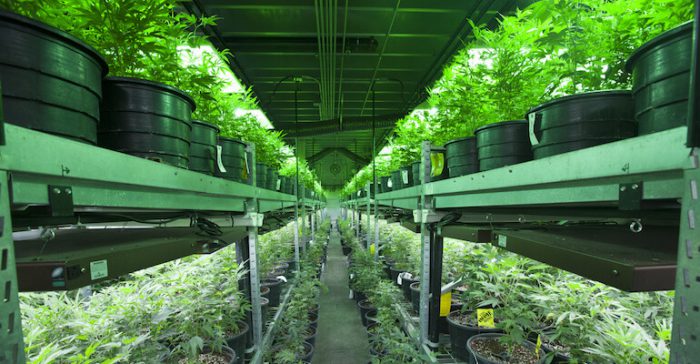Nick Collins, ERS, for Zondits
In recent years, LED lighting has had a transformative effect on the interior and exterior lighting markets by offering lamps and fixtures with high levels of efficacy and flexibility of application. Another market is poised for transformation through the application of LED fixtures, but this time it is the indoor agricultural market. Whether growing tomatoes, cannabis, or leafy greens in vertical farming operations, LEDs offer not only highly energy efficient lighting, but also the opportunity to tune the spectrum of photosynthetically active radiation (PAR) to manipulate growth rates, taste, color, and even nutrient content.
LEDs are set to change horticulture by increasing yields
Lux Review, March 21, 2017
The colour of LED light can be used not only to assist the growth of plants, but it can also be used to improve their year-round taste and quality and potentially increase their nutritional value.
Not only this, but growing fruits and vegetables under LED light makes them less vulnerable to the threats of climate change. It is no wonder then, that interest in the role LEDs can play in farming is growing.
Lux spoke to Doctor Phillip Davis, business manager at Stockbridge Technology Centre in Yorkshire, who will speak at our Horticultural Lighting Conference, to find out what more can be done to speed up the LED revolution in farming.
The Stockbridge Technology Centre was originally a UK Government research facility set up after the Second World War to improve food production methods.
The site has survived through many changes, but it is now an independent industry owned site and registered charity, which delivers innovative R&D services to all sectors of the horticulture and agri-food industry.
Today, as the world population continues to grow, there is a real fear that we will run out of food. The role of the Stockbridge Centre in the twenty-first century is to bring forward technology that can improve food production sustainably to tackle the challenges of today.
‘LED lighting was technology that we recognised five of six years ago as being something that could really benefit horticulture,’ Doctor Phillip Davis, told Lux.
‘There is a huge amount of interest across the horticultural industry in LEDs. This is not just because of energy efficiency, but because of the potential light has to manipulate plants.’
The ability to change the colour of LED light is crucial. 90 per cent of plant genes are regulated by light. So, by changing the light spectrum, it is possible to change how a plant grows, how fast it develops and its morphology. It is also possible to change the flavour, the aroma, the antioxidant content and, potentially, the amount of vitamins produced by a plant.
STC uses a plant’s natural biology to do this and does not not alter or play with their genetic make up in any way. Instead, it uses light to improve the yields, quality, as well as the taste of the product being cultivated.
Light can be used to ensure that the taste of fruit and vegetables is consistent throughout the year, for example, ensuring there are no differences in taste between a strawberry grown in season and one grown in winter.
